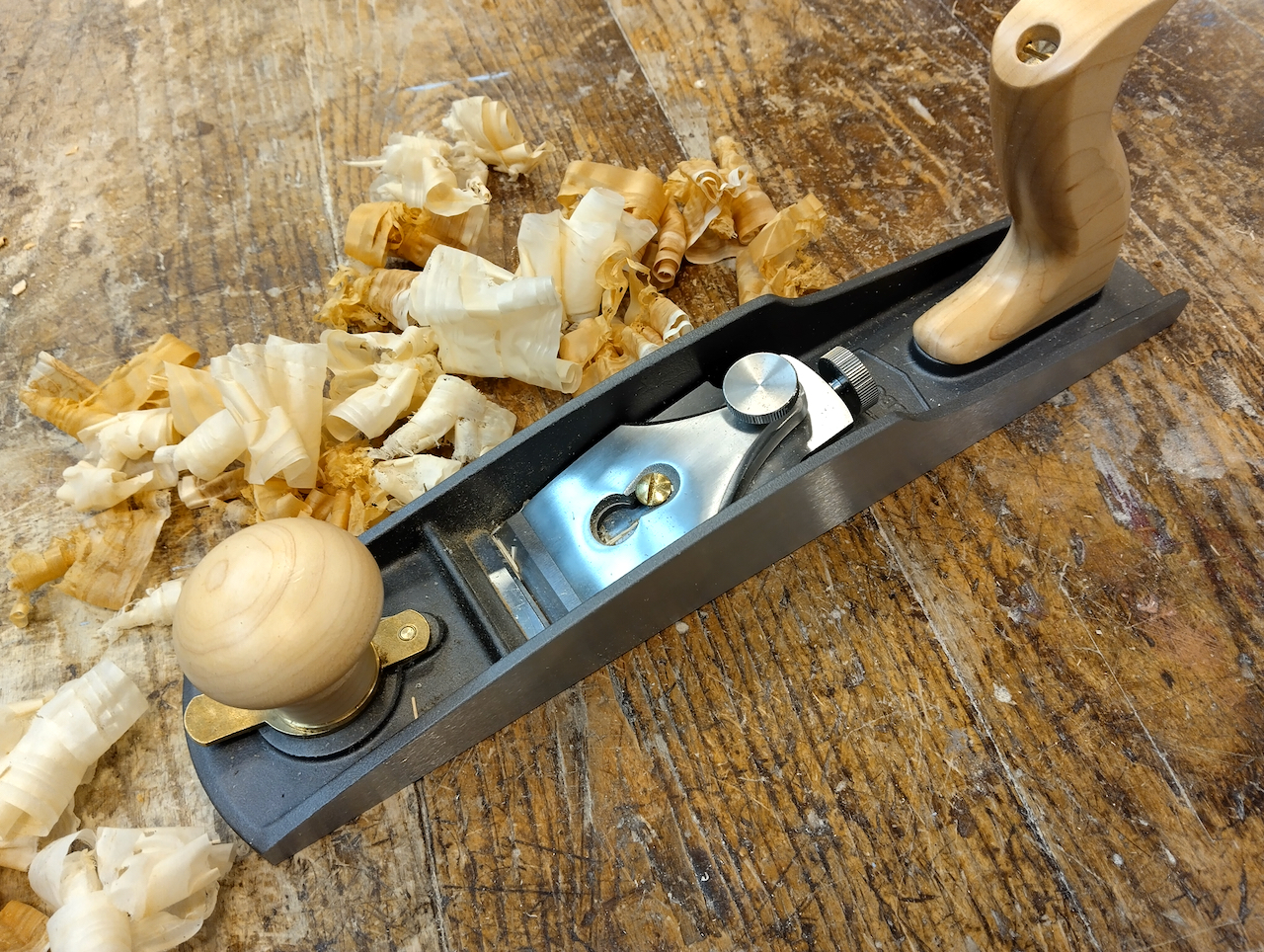We may receive a commission when you use our affiliate links. However, this does not impact our recommendations.
 If you follow woodworking news, you might have noticed a new player in the plane market: the Melbourne Tool Company from Australia. They’ve been promoting their line of planes, spokeshaves, and router planes for a few years now, gaining notable exposure on Instagram, in woodworking magazines, and on YouTube.
If you follow woodworking news, you might have noticed a new player in the plane market: the Melbourne Tool Company from Australia. They’ve been promoting their line of planes, spokeshaves, and router planes for a few years now, gaining notable exposure on Instagram, in woodworking magazines, and on YouTube.
The reviews I’ve read and the videos I’ve watched suggest that these planes, designed in Australia but made in China, are pretty good and priced competitively. I needed a second low-angle jack plane for my woodworking program, so I decided to give one a try.
Here are my thoughts on the Melbourne Tool Company’s low-angle jack plane. The plane is wonderfully designed, its sole is flat and true, and its Norris mechanism works flawlessly.


 The handles are very comfortable. Out of the box, it only required one major time investment: flattening the back of the blade. I was surprised that the back was not perfect for a plane in this price range ($200).
The handles are very comfortable. Out of the box, it only required one major time investment: flattening the back of the blade. I was surprised that the back was not perfect for a plane in this price range ($200).
The blade had been somewhat inadequately lapped, leaving a low line between 1/8” and 1/16” behind the leading edge. It took me about 20 minutes on diamond stones to get the back almost perfectly flat. After establishing a secondary bevel, I gave the plane a try.

This picture shows the back of the blade during my diamond stones flattening process, of the leading edge of the blade’s back. After an additional 10 minutes of work, I eliminate 95% of the depression line.
It was a pleasure to work with this plane. Adjusting the blade and the throat opening was easy, and the tool could produce extremely fine shavings, as you can see from the images I’ve provided.


One observation that surprised me was the thin, sharp leading edge of the lever cap. As seen in the images, its geometry is set at around 10°. While it looks impressive and undoubtedly aids in clearing out shavings, I wonder if it will maintain its shape over many years of use and withstand excessive clamping pressure from inexperienced users. Applying moderate or just the right amount of pressure with the tensioning knob should be fine, but over-torquing might lead to deformation. Notably, other manufacturers like Lie-Nielsen and WoodRiver use heftier lever caps, making Melbourne Tool Company’s choice here quite bold. In terms of materials, all machine components are made of stainless steel and brass, while the body is crafted from ductile cast iron.




Comparison to Other Planes
WoodRiver Plane:
- Advantages: The Melbourne plane has a more comfortable front knob and includes a lateral adjustment as part of its Norris mechanism. The WoodRiver plane requires manual lateral adjustment with a hammer or hand manipulation after reducing lever cap tension.
Lie-Nielsen Plane:
- Advantages: The Melbourne plane’s Norris mechanism allows both forward and backward blade advancement and lateral adjustment using one knob. Additionally, the Melbourne plane features a positive locking system for the front wooden knob and its threaded stem. Unlike the threaded stem in the Lie-Nielsen planes, which can separate and require re-gluing (I witnessed this on two Lie-Nielsen planes I worked with), the Melbourne knob-stem duo seems to be secured with a screw to prevent inadvertent detachment.
Lee Valley Low-Angle Jack Plane:
- Comparison: The Lee Valley Low-Angle Jack plane is similar to the Melbourne one. Both are equipped with a Norris mechanism, and both have a comfortable knob and handle. However, a direct comparison might only be partially fair since the Lee Valley plane is longer, wider, and heavier.
Overall
The Melbourne Tool Company low-angle jack plane is a great tool made from quality materials that should last a lifetime. If you’re considering an addition to your plane collection, this is a worthwhile option.
Here are some supplies and tools we find essential in our everyday work around the shop. We may receive a commission from sales referred by our links; however, we have carefully selected these products for their usefulness and quality.








